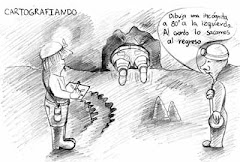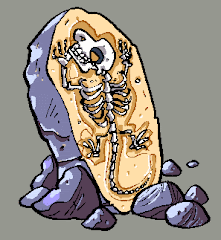16 – Arrival to Mação
17 – Introduction
Morning – 9h30
Luiz Oosterbeek – Scope of the IP and its regulations
Maurizio Quagliuolo – HGES
Afternoon – 14h30
Visit to the Museum and village of Mação
17h30 – Special seminar
Marin Carciumaru: Reflexions sur le Paléolithique Moyen et Supérieur en Roumanie. Témoignage de comportement symbolique pour l’homme de Neandertal en Roumanie
18 – Value
Morning – 9h30
Luiz Oosterbeek – Conceptual issues
Samir Abdullac – Heritage places in Urban Design, the Case Study of Chartres (France)
Afternoon
14h30 – Special seminar : Marin Carciumaru: Reflexions sur le Paléolithique Moyen et Supérieur en Roumanie. La signification symbolique de certains fossiles découverts dans l’Epigravettien de Poiana Cireşului-Piatra Neamţ, Roumanie
16h00
Jorge Rodrigues – The question of Value in Heritage: Use Value versus Cultural Value
Students’ essays:
Luciana Sentana Ribeiro
Ilknur Ari
Ruben Garcia
Kaji Appolinaire
Sachipan Srikanlaya
Alice Oriana La Porta
Anna Lina Manin
Alma Mekondjo Nankela
Chunping Ma
Antonella Perdergnana
Dario Sigari
Indra Purs
Cinthia Dos Santos Moreira
Renata Faria Barbosa
19 – Conservation (lectures in Tomar, in the Convent of Christ, World Heritage)
Morning – 8h30[1]
João Coroado – Visit to the Laboratories of IPT
Gael de Guichen (HERITY Vice-President) – Conservation after HERITY’s concerns
Afternoon – 14h30
Iria Caetano – Practical assessment of conservation issues in the Convent of Christ
20 – Practical workshop on sites assessed by HERITY: Mação, Abrantes, Barquinha (departure: 8h30)
Maurizio Quagliuolo (co-ordination)
Luiz Oosterbeek (the perspective of the regional network)
José Gomes (CIAAR)
Fernando Freire (CCVNB)
Francisco Lopes (BMABA)
Filomena Gaspar (Castle of Abrantes)
21 – Communication
Morning – 9h00
Students’ essays
António Carlos Barral Carloto De Castro
Fernando José da Luz Ferreira
Luís António Moleirinho Moura
Nuno Miguel Costa Borges De Sousa
Tiago Filipe Dos Santos Pereira
Andreia Filipa Ramalho Mendes e Viçoso Ferreira
Francisco Manuel Baptista Antunes
Gonçalo Alexandre Marques Quitério
Ivo Simão Da Cruz Oosterbeek
Jonathan Sousa Da Silva
José Fernando Porto Tavares
Rui Manuel Amador Bernardino
Julie Arnaud
Maria Anna Bertolino
Rosina Chiurazzi Morales
Vigaudas Juozaitis
André Luís Gonçalves De Moura
Ariana Silva Braga
Barbara De Sousa Cascaes
Barbara Rogens Ramos Bezerra
Myriam Cusimano
Afternoon – 15h00
Renaldas Gudauskas, Ugnius Radvila – Strategic Knowledge&Communication Management in the context of World Cultural Tourism development
André Soares – Educação Patrimonial: um exemplo de teoria e prática na Gestão do Patrimônio Cultural brasileiro
Ramon Viñas y Guillermo Morote – Two Examples of Rock Art Management in the Spanish Mediterranean Arc: The Rock Art Interpretation Centre at Les Muntanyes de Prades and the Valltorta-Gasulla Cultural Park
18h00 – Special seminar
Marin Carciumaru: Reflexions sur le Paléolithique Moyen et Supérieur en Roumanie. Etude technologique, effectuée à l’aide du microscope digital VHX-600, sur un os gravé épigravettien de l’habitat de Poiana Cireşului-Piatra Neamţ
22 – Use and Services: basic services (these are the social obligations). A better visit
Morning – 10h00
Vítor Teixeira – Quality as a basic service
Helena Zemankova - European industrial heritage listed on the World Heritage List
Afternoon – 14h00
Students’ essays
Daniela Gadotti Sophiati
Edson Bettanin
Jefferson Crescencio Neri
Leonard Grala
Luzia Bastos De Castro
Marcos Aurélio Rufino
Marcos César Pereira Santos
Marian Helen Da Silva Gomes Rodrigues
Rachel Akkanad Varghese
Síria Borges
Marcus Ågren
Annie Rosen
Mine Kiraz
Erika Magali Gomez Gonzalez
Giedre Gudauskaite
Kristine Dreija
Edmilson Paes de Castro
Isaura Margarida Leal Dos Santos
Sara Mendonça De Sousa Dias Brito
Erika Johansson
Laure Jouvin
Hugo Gomes
Viola Campanini
23 – Use: practical demonstration.
Whole day (departure 8h30)
Helena Zemankova – (WS in V.N. Barquinha)
Jan Horký
Zoe Malovcová
Helena Říhová
24 – Use and Services: services for specialists (e.g. libraries, laboratories, etc.). Innovation
Morning – 10h00
Hipolito Collado – The management of Cultural Heritage in Extremadura (Spain)
Mara Urtane - Balancing use and preservation in cultural heritage landscapes
Afternoon
15h00 – Special seminar
Marin Carciumaru: Reflexions sur le Paléolithique Moyen et Supérieur en Roumanie. L'industrie et l'art sur des matériaux durs animaux de Gravettien et Epigravettien en Roumanie
16h00
Dario Seglie – Prehistoric art in Italy: themes and problems
Piero Ricchiardi – International and Italian laws in the cultural heritage field
25 – Use and Services: complementary services (they improve the quality of a visit but are not essential, like a restaurant or other tourism induced resources). Tourism
Morning – 10h00
Luís Mota Figueira – Turiauta as a tool for the public
President of Tourism Region
Fabio Carbone - Measuring the impacts of certification in Heritage Tourism
Afternoon – 14h30
Fernanda Aparício – Global regional development and its relation with cultural heritage places
26 – IP conclusion
Final discussion and Assessment
Ana Paula Remédios – Cultural Heritage and regional planning
27 – Departure
ABSTRACTS OF LECTURES
Dario Seglie
Prehistoric art in Italy: themes and problems
Prehistoric Art in Italy is present in caves fron the Upper Palaeolithic, particularly in the South of the peninsula and in the Mediterranean islands. After the last glacial period, the post-Palaeolithic Rock Art is particularly present open air in the Alps. The conservation problems to be solved are of various type and importance. The plans of the Italian Cultural Heritage Ministry.
Hipolito Collado
The management of Cultural Heritage in Extremadura (Spain)
The Consejería de Cultural y Turismo of the Junta de Extremadura is the institution for Cultural Heritage management in Extremadura (Spain). This paper is a summary of our work line at present:
1.- To make possible the development of new infrastructures with the conservation of Cultural Heritage
2.- To promote historical, etnographic and archaeological research.
3.- To adapt archaeological sites for tourism uses
4.- To prevent archaeological sacking
Mara Urtane
Balancing use and preservation in cultural heritage landscapes
Process of usig cultural heritage landscapes for visits and tourism are clearly connect with economical aspects. Increasing the number of visitors means increasing also the design of the site and the additional facilities for visitors. Legthening the time spent on the site is also important, and makes good economic sence. Different scale and type cultural heritage landscape use and preservation will be discussed
Piero Ricchiardi
International and Italian laws in the cultural heritage field
The general law priciples, directives, recommendation, rules (UNO, UNESCO, UE).
The law and legal system in Italy. General codes (civil, criminal, administrative) and specific laws for Cultural Heritage conservation, preservation, mamagement
Ramon Viñas[2] y Guillermo Morote[3]
Two Examples of Rock Art Management in the Spanish Mediterranean Arc: The Rock Art Interpretation Centre at Les Muntanyes de Prades and the Valltorta-Gasulla Cultural Park
At the beginning of the 1980’s, several researchers started putting forward measures to preserve the rock art sites of the Spanish Levant. Years later, in 1998, Levantine Rock Art was added to UNESCO’s World Heritage List. The Valltorta Museum and the CIAR at Montblanc constitute two successful examples of cultural heritage management in Spain.
Renaldas Gudauskas, Ugnius Radvila
Strategic Knowledge&Communication Management in the context of World Cultural Tourism development
The studies and practice of strategic knowledge and communication management has grown rapidly driven by social, economic, and technological trends. Tourism has been slow and late in adopting this strategies due to a lack of gearing between relevant research and tourism. Every country is competing on the overcrowded global cultural tourism markets. In our vision the cultural tourism is the future strategic direction for the World tourism development. For that we need adequate Cultural tourism research, based on Strategic Knowledge &Communication Management (SK&CM) applications for cultural tourism, which will provide the real picture of the general aspects of cultural tourism and their overall impact to the Society. Cultural tourism strategy, being the heart of a national tourism strategy needs to be in clear coordination with the strategies for development of other tourism types. Only after this we can set integrated policies and legislation directions, according to the needs for sustainable and socially responsible cultural tourism development. SK&CM model will include the national branding strategy for cultural tourism, leading to projects and programs of total digitalization of cultural assets, community involvement, virtual and augmented reality solutions, serving as a marketing vehicle to deliver information, communication and extend the geographies of cultural tourism. Understanding of target audiences and developing strategies to effectively reach and motivate them is at the heart of cultural tourism strategic communication practice and drives decision making in everything we do. It will help to develop a comprehensive brand strategy for a cities, regions and countries, defining a value based approach in order to implement a SK&CM of Cultural Heritage.
[1] Departure from the museum of Mação (IPT bus)
[2] Researcher at IPHES, Tarragona University and Director of the Rock Art Interpretation Centre (CIAR) at Muntanyes de Prades.
[3] Technical Director and Curator of the Valltorta Cultural Park
--
Cláudia Fidalgo
Gabinete de Relações Internacionais
Instituto Politécnico de Tomar
Av. Cândido Madureira, 13
2300-531 Tomar
Portugal
Tel. 249346363 / 249 346 361
segunda-feira, 15 de março de 2010
Assinar:
Postagens (Atom)






